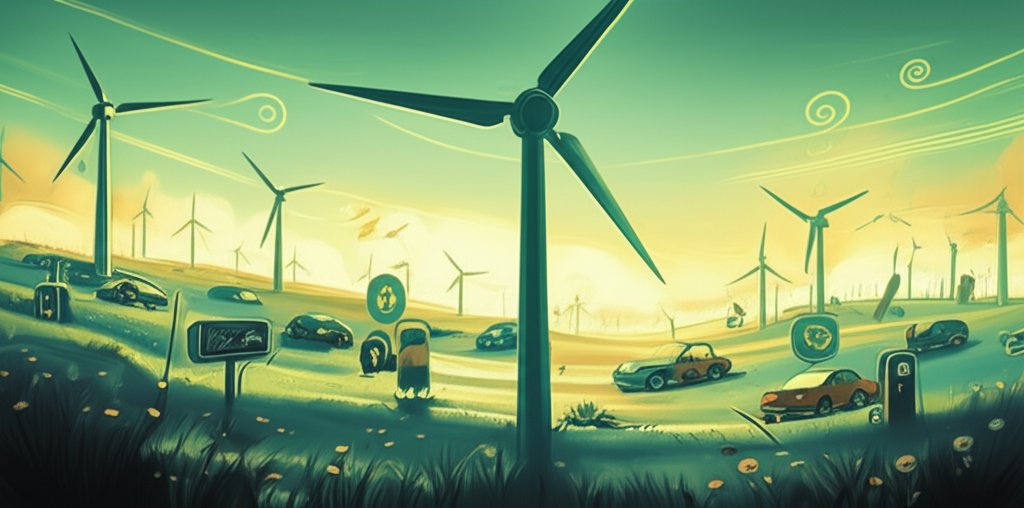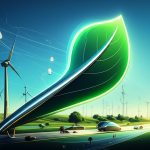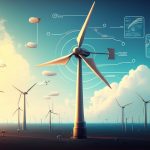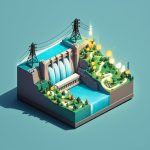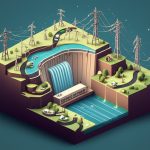When a wind turbine blade snaps loose from its trailer, as happened recently on I-70, it’s a stark reminder of the immense scale of these energy-generating machines. These blades aren’t just big; they’re key to converting wind into electricity. But how much power does a wind turbine make, really? The answer is more complex than a single number.
At a glance:
- Understand the factors that determine a wind turbine’s power output.
- Learn about different turbine sizes and their corresponding power generation capacities.
- Explore how location and wind speed impact energy production.
- Discover ways to estimate wind turbine power generation for your specific needs.
- Debunk common misconceptions about wind turbine efficiency.
The Many Factors Influencing Power Generation
Pinning down a single figure for wind turbine power output is impossible because it depends on several intertwined factors. Think of it like asking “how fast does a car go?”. It depends on the car, the driver, and the road conditions. Similarly, for wind turbines:
- Turbine Size (Rated Capacity): This is the headline number you’ll often see, expressed in kilowatts (kW) or megawatts (MW). It represents the maximum power the turbine can produce under ideal wind conditions.
- Blade Length/Rotor Diameter: Longer blades capture more wind, leading to greater power output.
- Wind Speed: Power output increases exponentially with wind speed. Double the wind speed, and you roughly quadruple the power.
- Location: Areas with consistently strong winds, like coastal regions or high plains, will generate significantly more electricity.
- Turbine Technology: More advanced turbines are designed for higher efficiency and can extract more energy from the same wind conditions.
- Capacity Factor: This is the actual energy produced over a period versus its rated capacity. A turbine rated for 2 MW might only produce an average of 0.7 MW due to variable winds.
Understanding Turbine Sizes and Their Potential Output
Let’s break down typical turbine sizes and their potential power output. Keep in mind these are just estimates.
- Small Wind Turbines (Residential): Rated from 1 kW to 10 kW. These are typically used for homes, farms, or small businesses. Example: A 5 kW turbine in a good wind location might generate enough electricity to offset a significant portion of a household’s energy consumption.
- Mid-Size Wind Turbines (Community or Commercial): Rated from 100 kW to 1 MW. Often used for community-scale projects or to power industrial facilities. Example: A 500 kW turbine could power a small factory or a cluster of homes.
- Large Wind Turbines (Utility-Scale): Rated from 1 MW to 8 MW (and even larger). These are the workhorses of wind farms. Example: A 3 MW turbine, common in many wind farms, can power hundreds of homes. Modern turbines push even higher, with some exceeding 10 MW.
Power Output by Turbine Type (Annual Estimates):
| Turbine Size | Rated Capacity | Annual Energy Production (Estimate) | Typical Use Case |
|————–|—————-|—————————————-|—————————————–|
| Small | 5 kW | 7,500 – 15,000 kWh | Residential, small business |
| Mid-Size | 500 kW | 1,000,000 – 1,500,000 kWh | Community projects, industrial facilities |
| Large | 3 MW | 6,000,000 – 9,000,000 kWh | Utility-scale wind farms |
Note: kWh = kilowatt-hours. Estimates vary widely based on wind conditions.
The Impact of Location and Wind Speed: A Real-World View
Location is paramount. A turbine in a consistently windy area will generate significantly more power than the same turbine in a sheltered location. Wind speed is especially critical because power output is related to the cube of wind speed. That means a small increase in wind speed results in a much larger increase in power.
For instance, the American Wind Energy Association (now the American Clean Power Association) provides wind resource maps that show the average wind speeds across different regions. Areas with higher wind classes (Class 3 and above) are generally suitable for wind turbine development.
Consider two scenarios:
- Scenario A: A 2 MW turbine in Iowa (known for its strong winds) might have a capacity factor of 40%, generating roughly 7,000,000 kWh annually.
- Scenario B: The same 2 MW turbine in a less windy location, like a forested area, might have a capacity factor of only 25%, generating around 4,400,000 kWh annually.
The difference is substantial and underscores the importance of site selection. This is why understanding the factors behind incidents like the recent Blade Blockage Impacts I-70 – which likely involved the transport of these massive components to a wind farm location – is crucial for the continued growth of reliable wind energy.
Estimating Wind Turbine Power Generation: A Practical Approach
While precise calculations require sophisticated modeling, you can get a reasonable estimate of a wind turbine’s potential power generation with a simplified approach:
- Determine the Turbine’s Rated Capacity: Find the turbine’s specification sheet or consult with the manufacturer.
- Assess the Average Wind Speed at the Site: Use online wind resource maps, local weather data, or anemometers (wind speed measurement devices) to estimate the average wind speed at the intended turbine location. Consider the height of the turbine.
- Estimate the Capacity Factor: For a rough estimate, use a capacity factor of 25-40% for utility-scale turbines, adjusting based on the wind resource assessment. Lower wind speeds mean a lower capacity factor.
- Calculate Annual Energy Production: Multiply the rated capacity by the capacity factor and the number of hours in a year (8760).
Example: A 1.5 MW turbine with a 30% capacity factor would generate approximately 3,942,000 kWh annually (1.5 MW * 0.30 * 8760 hours).
This is just a starting point. A professional energy assessment is recommended for making informed investment decisions.
Dispelling Myths: Wind Turbine Efficiency and Real-World Output
It’s easy to get caught up in misconceptions about wind turbine efficiency. Here are a few key points to keep in mind:
- Myth: Wind turbines are always operating at their rated capacity.
- Reality: Wind turbines rarely operate at their maximum rated capacity. Wind speed fluctuates, and turbines are designed to shut down during extremely high winds to prevent damage.
- Myth: Wind turbines are inefficient.
- Reality: Modern wind turbines can achieve high levels of aerodynamic efficiency in capturing wind energy. The Betz limit, which dictates the maximum theoretical efficiency of a wind turbine, is around 59.3%. Modern turbines can approach this limit under ideal conditions.
- Myth: All locations are suitable for wind turbine development.
- Reality: Wind resource assessment is crucial. Investigate areas with sustained wind speeds and evaluate factors such as environmental impact, grid connection costs, and community acceptance.
The Actionable Playbook: Making Informed Decisions
Here’s a quick start guide to understanding how much power a wind turbine can make for your specific needs:
- Define Your Energy Needs: How much electricity do you currently use? This sets a target for how much you need to generate.
- Assess Your Location’s Wind Resource: Use online tools, local data, or professional assessments to understand the average wind speed at your site.
- Choose the Right Turbine Size: Based on your energy needs and wind resource, select a turbine with an appropriate rated capacity.
- Consider the Capacity Factor: Factor in the variable nature of wind and estimate the actual energy production based on the capacity factor.
- Factor in Installation and Maintenance Costs: Wind turbine projects involve upfront investment and ongoing maintenance. Compare the total cost of ownership against the potential energy savings.
Quick Answers: Common Questions About Wind Turbine Power
Q: How long do wind turbines last?
A: Most modern wind turbines are designed to last for 20-30 years with proper maintenance.
Q: What happens to the power generated when the wind isn’t blowing?
A: Wind energy is intermittent. To ensure a reliable electricity supply, energy storage solutions (like batteries) or a diverse energy mix (including other renewable sources and traditional power plants) are needed.
Q: How much does it cost to install a wind turbine?
A: The cost varies significantly depending on the size, location, and complexity of the installation. Small residential turbines can cost from $5,000 to $8,000 per kilowatt, while utility-scale turbines are typically less expensive per kilowatt but involve much larger overall investments.
Q: Are wind turbines noisy?
A: Modern wind turbines are much quieter than older models. Noise levels depend on the turbine design, wind speed, and distance from the turbine.
Beyond the Headlines: Understanding the True Potential
Incidents like the I-70 blockage serve as a reminder of the monumental scale and complexity involved in deploying wind energy infrastructure. Understanding how much power does a wind turbine make is about much more than just the rated capacity. It’s about considering the interplay of turbine size, location, wind speed, technology, and, ultimately, making informed decisions to harness the power of the wind effectively and responsibly.
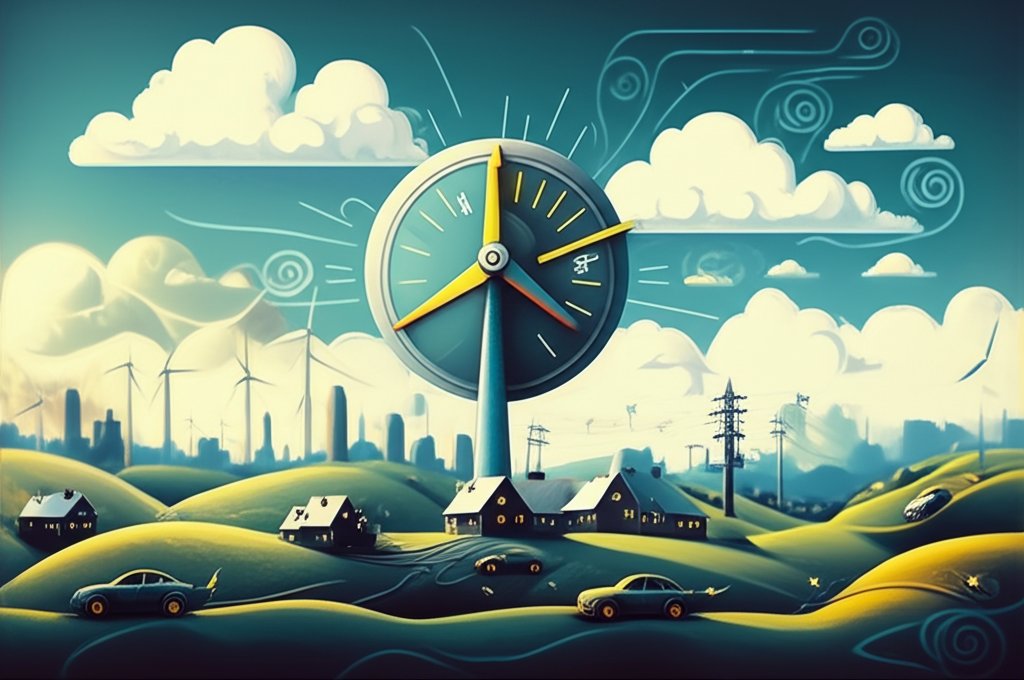
- Hydro Extrusions USA Leads North American Aluminum Profile Solutions - December 28, 2025
- Hydro North America Leads Aluminum Extrusion Solutions Across Diverse Industries - December 27, 2025
- Hydro Extrusion North America Provides Custom Solutions Across Diverse - December 26, 2025
